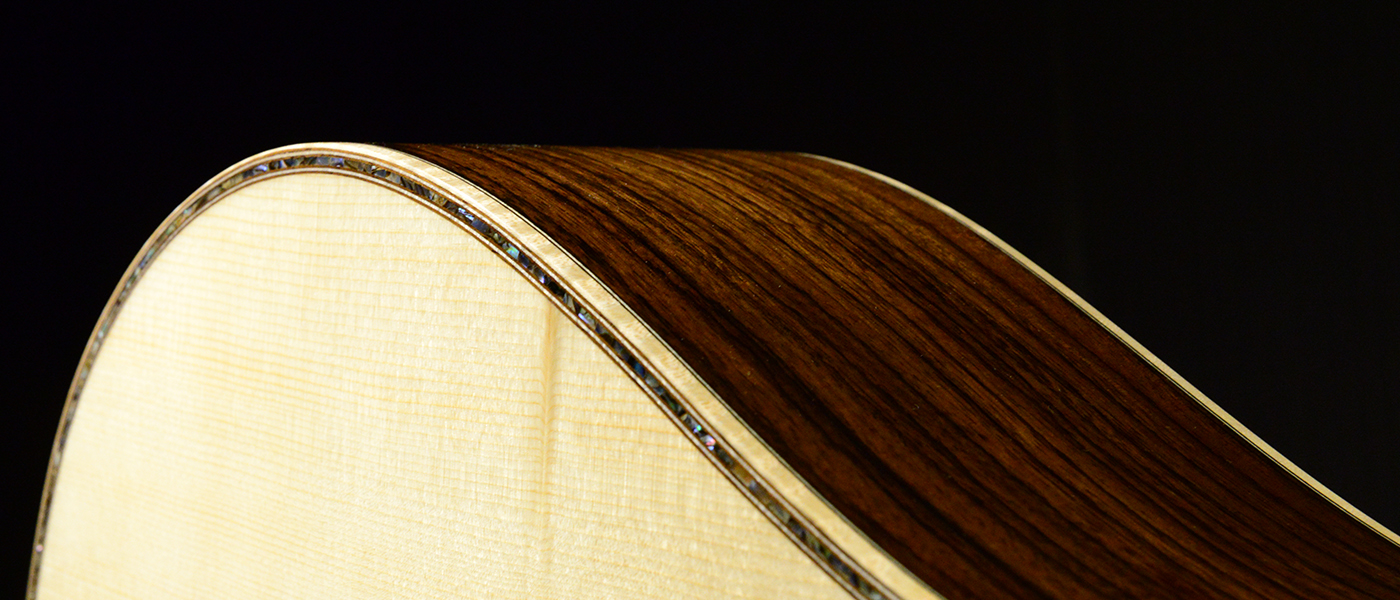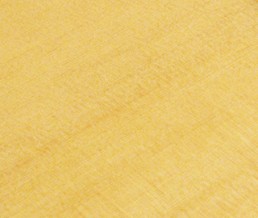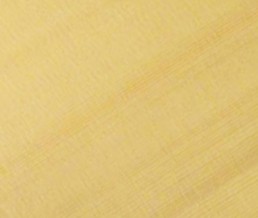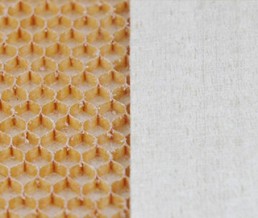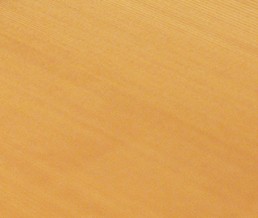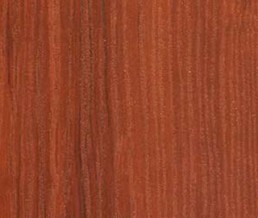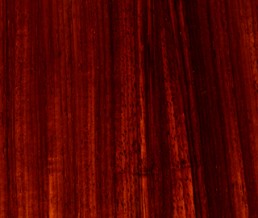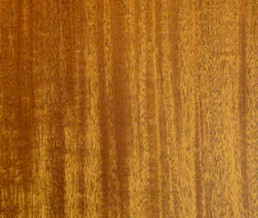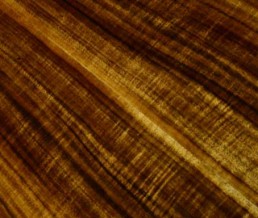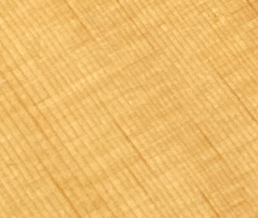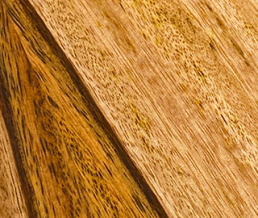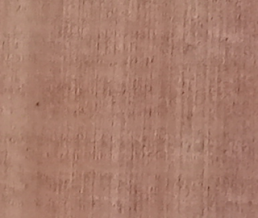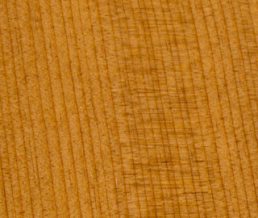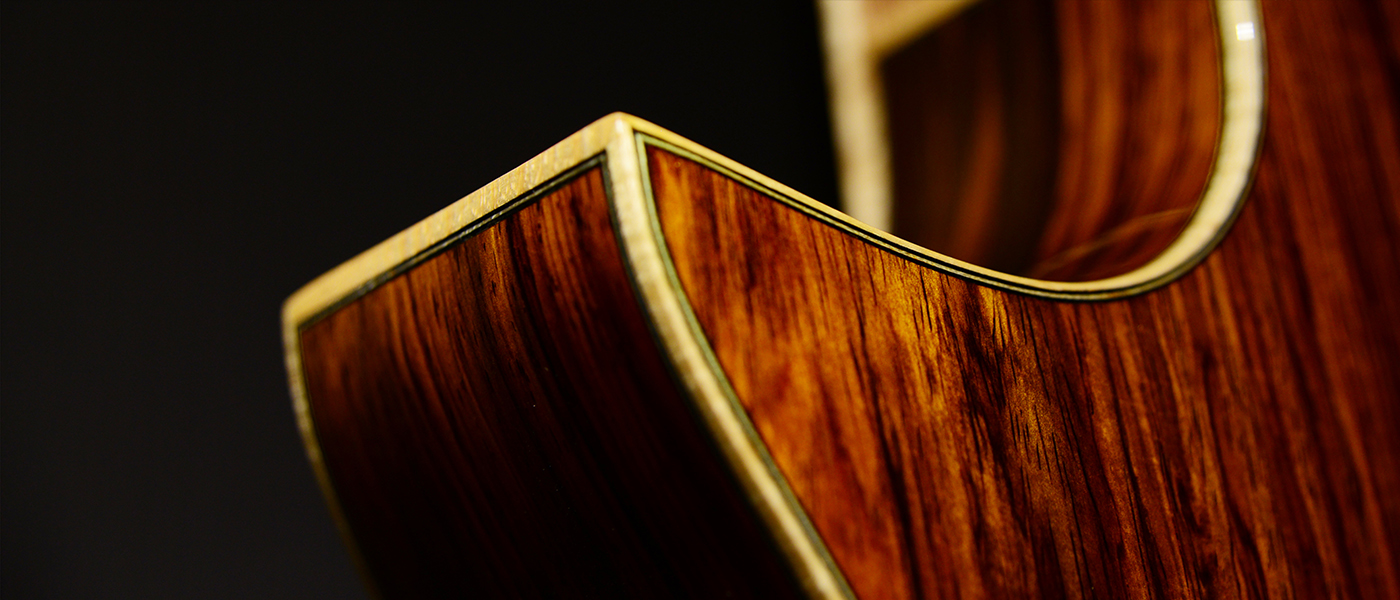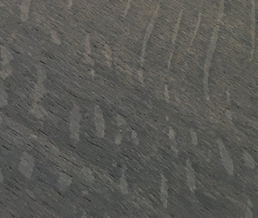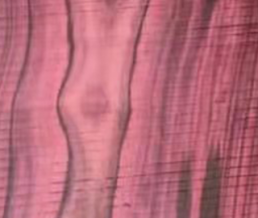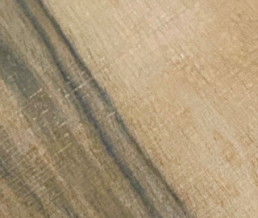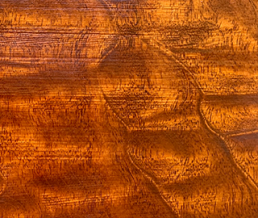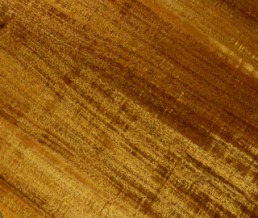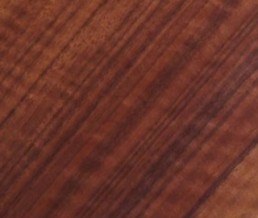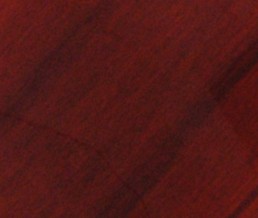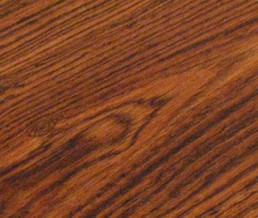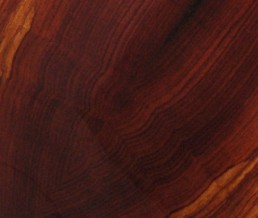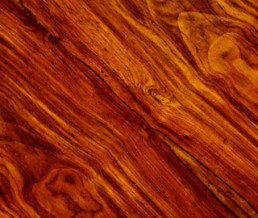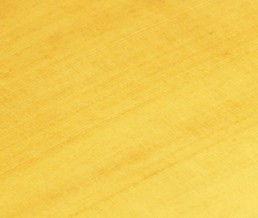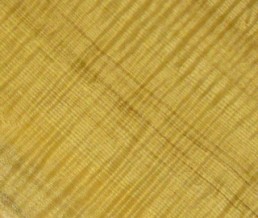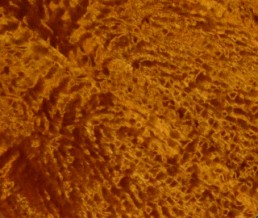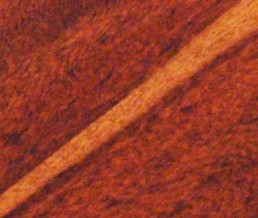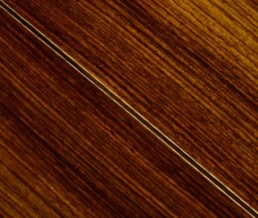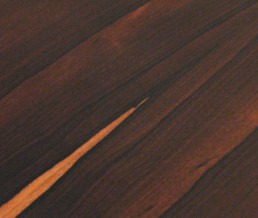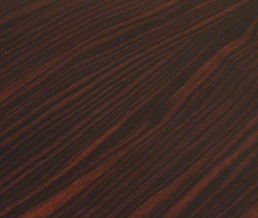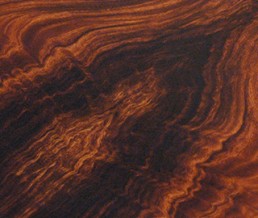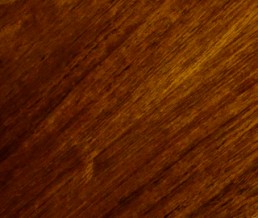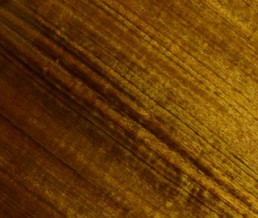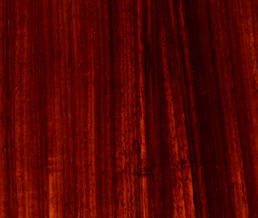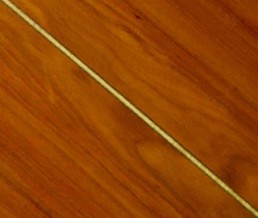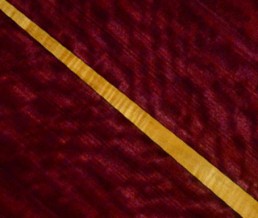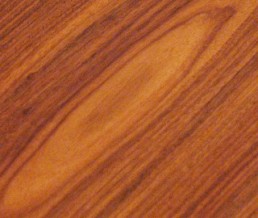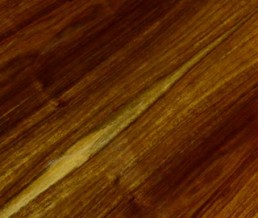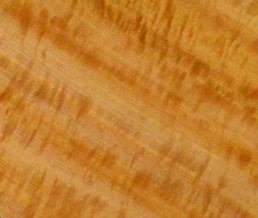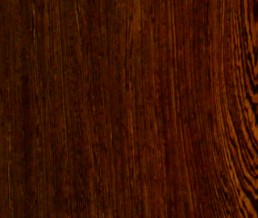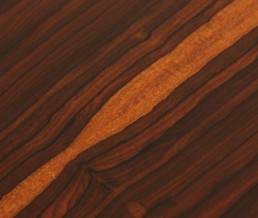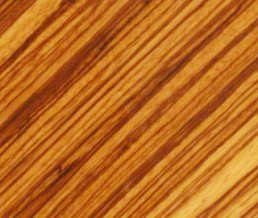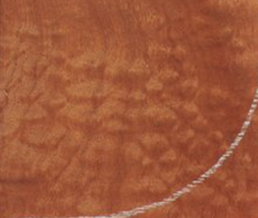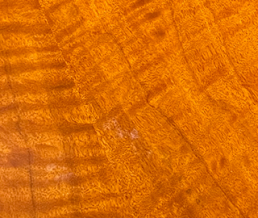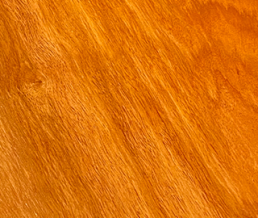Tonewoods
Adirondack Spruce
Adirondack Spruce is an iconic wood heralded as a foremost among top woods. It has more overall resonance than Sitka, loud and powerful with a focused punchy bass.
German Spruce
Known for its creamy white appearance, German Spruce possesses almost the same tonal characteristics as Adirondack; clear, focused, tight bass response but less bright.
Sitka Spruce
Probably the hardest of the woods used in the manufacture of soundboards, Sitka Spruce produces a loud and bright tone, accentuating the basses and trebles – qualities that made it a popular choice.
Swiss Spruce
Aside from its beautiful creamy appearance, Swiss Spruce is highly regarded for its responsiveness and rich tone, with very focused low ends and very refined clear trebles.
Double Top
A soundboard made from two tops with Nomex Honeycomb at its core, is known for its lightness and strength; a very responsive top with enhanced sustain, projection, and clarity.
Western Red Cedar
Western Red Cedar is a soft wood which produces a warm, mellow, ‘earthy’ tone. Used for many years for classical guitar soundboards but has recently become popular with steel strings players.
Port Orford Cedar
Rarely seen in standard builds, Port Orford Cedar is highly sought after for its bold, robust, and responsive tone, making it an excellent choice for both nylon and steel stringed instruments.
Pacific Redwood
Favored by players looking for more upper harmonic content while having warm and tight low ends, Pacific Redwood is bold, punchy and crisp, with loads of overtones on tap.
Engelmann Spruce
A lighter colored wood than Sitka Spruce, Engelmann Spruce shares the same tonal characteristics as a Sitka only with richer overtones and more focused mids.
African Padauk
Visually striking, African Padauk shares many tonal properties of traditional rosewoods, having warm and focused lows while having clear highs and with plenty of overtones.
Khaya Mahogany
Khaya Mahogany is a hard, bright sounding wood with focused mids. With its wide dynamic range, it responds very well to both sensitive playing and louder, percussive styles.
Pacific Koa
Koa is a beautiful figured wood, dark brown in appearance with blonde streaks. Tonally, it combines the clarity of a maple with rosewood-like qualities and the sensitivity of mahogany.
Lijiang Spruce
A wood used for centuries in traditional Chinese instruments, Lijiang trees grow slowly near the Tibetan Plateau. Featuring very tight grains, Lijiang has a Lucchi speed that exceeds 6000 m/s – highly responsive making it ideal as tops.
Choco Mango
Expressive and gorgeous, Choco Mango presents a perfectly balanced tone with a warmth close to a koa matched with very focused mids and highs.
Red Himalayan Hemlock
Extremely rare and found only in the Himalayan range, these slow growing trees yield extremely fine grain and color similar to cedar but are 10% stiffer than Sitka. One can only imagine the headroom it gives especially when strummed.
Sinker Redwood
Taken from old-growth redwood logs reclaimed from the depths of Northern California rivers, Sinker Redwood display a rich spectrum of variegation uniquely imparted from silt and mineral-rich water. Its age translates into a nice cross-grain stiffness giving it a bold response and brilliance with warm overtones.
Torrefied Wood
A wood that was subjected to a thermo-curing process to improve its stability while increasing its resonance and responsiveness just like of an aged wood. We select some of our very best Sitka and Adirondacks to torrefy, replicating the cellular structure of an old guitar, and making it more resistant to swelling and shrinking.
Ancient Bog Oak
Ancient Bog Oak is a partially fossilized that is carbon dated to be over 5000 years old. Available in very limited quantities, this wood is praised for its rich mellow warm sound which is comparable with any premium tropical hardwood.
Bois de Rose
This prized and highly sought after hardwood can only be found in Madagascar. French for rosewood, Bois de Rose is under the true rosewood genus Dalbergia and is highly regarded for its stunning looks and very round midrange.
Pale Moon Ebony
This Southeast Asian true Diospyros ebony is probably the most perplexing exotic wood. Very rare and expensive to acquire, Pale Moon Ebony is very dense and heavy which results to a very focused tone with tight lows and clear highs.
“The Tree”
A very exclusive wood for its very mysterious history, The Tree is considered a holy grail for builders and collectors. Breathtaking both in tone and form, The Tree features a very expressive pattern of glistening waves plus a response and headroom like no other – truly one of a kind.
Australian Blackwood
With an appearance close to a Koa due to its marblelike wavy grains, Australian Blackwood is tonally comparable to a mahogany being bright sounding and rich in the mid range.
American Walnut
Exhibiting an extremely even response curve across the frequencies, Walnut combines the warm earthy tones of a rosewood with the transparent nature of a mahogany.
Bloodwood
Bloodwood is an attractive highly figured wood that is naturally red in color. Known for its clarity especially on the high registers, it sounds somewhere in between of a rosewood and an ovangkol.
Bocote
Bocote features a tobacco-brown color with distinct parallel black lines and multicolored strips. It is known for its deep sounding basses and an overall big sound.
Brazilian Rosewood
The most sought-after tonewood revered for its deep basses, mature mid-range and sweet trebles. Now in increasingly short supply, Brazilian Rosewood is generally reserved for the highest models.
Cocobolo
Cocobolo is a very beautiful wood, known to change color being cut. It offers everything Brazilian Rosewood offers; increased power, sustain and volume, along with its beauty in color and figure.
Spanish Cypress
Famous tonewood for flamenco guitars due to its “chimey”, clear, articulate tone with great sustain, Yellow Cypress is best when a strong tone and bright attack is required.
Flamed Maple
Maple is highly regarded for its pronounced mids and trebles together with its very fast attack, making it very suitable for fast and percussive playing styles.
Flamed Sapele
Closely associated with Mahogany due to its similarity in terms of responsiveness and tonal characteristics, Flamed Sapele is highly sought after due to its expressive curly grains.
Granadillo
Granadillo shares the same tonal characteristics of a rosewood, one that is rich in the low end with pronounced highs, giving that deep yet bright sound.
Indian Rosewood
Indian Rosewood is famous for its warmness, rich basses and clear treble response. One of the most popular wood for constructing guitar bodies.
Pacific Koa
Koa is a beautiful figured wood, dark brown in appearance with blonde streaks. Tonally, it combines the clarity of a maple with rosewood-like qualities and the sensitivity of mahogany.
Malaysian Blackwood
Tonally very close to ebony with a strong bass and more defined mids, Malaysian Blackwood features dramatic mix of chocolate brown wild figuring with reddish streaks.
Macassar Ebony
Macassar Ebony is valued for its striking chocolate and light brown coloration. It has strong bass and lower mids coupled with clear and transparent highs, and is very responsive, clear and loud.
Khaya Mahogany
Khaya Mahogany is a hard, bright sounding wood with focused mids. With its wide dynamic range, it responds very well to both sensitive playing and louder, percussive styles.
Choco Mango
Expressive and gorgeous, Choco Mango presents a perfectly balanced tone with a warmth close to a koa matched with very focused mids and highs.
Monkey Pod
Monkey Pod has a golden amber color with dark streaks sometimes resembling Koa or Black Acacia. It produces a woody, pulsing tone without losing the clear high frequencies, which is very close to a mahogany.
Madagascar Rosewood
Madagascar Rosewood has risen in popularity because of its similar properties to Brazilian Rosewood – a warm sound, with well defined basses, mids, and rich trebles.
African Ovangkol
Similar in appearance to rosewood but featuring a lighter, coffee-coloured hue, African Ovangkol shares many of rosewood’s tonal characteristics, with a slightly livelier mid-range and a little less in the bass registers.
African Padauk
Visually striking, African Padauk shares many tonal properties of traditional rosewoods, having warm and focused lows while having clear highs and with plenty of overtones.
Pernambuco
Revered for its rarity for it seldom grow wide enough as a guitar timber, Pernambuco’s sweet highs and supple bass response result into an extremely refined sounding instrument.
Purple Heart
Striking and unique in color, Purple Heart sounds close to rosewoods with its well defined basses and crystal like trebles – a vibrant wood aesthetically and sonically.
Santos Rosewood
Santos Rosewood, commonly known as Pau Ferro, closely resembles most rosewoods visually and tonally – only mellower in terms of hue and sound.
Senegal Rosewood
Remarkable for its attractive golden brown grains, Senegal Rosewood offers power, complexity, and richness in tone with softer and more welcoming midrange, smoother top end, and robust low end.
Tasmanian Myrtle
Visually stunning with an awe inspiring grain pattern, colouration and figure, Myrtle is incredibly lively across the tonal spectrum with its exceptional balance and clarity
Wenge
A very delicate hardwood, Wenge is distinct for its evenly spaced dark chocolate streaks and its glassy tonal character, one with tight bass response with loads of shimmer on top.
Ziricote
Heavier than most rosewoods and comparable to Ebony in hardness, Ziricote offers the striking looks of Brazilian Rosewood with similar depth of tone, but with overtones akin to a Macassar Ebony.
African Zebrawood
Zebrawood is an extremely attractive wood with about the same density, resonance and tone as Indian Rosewood, with slightly dampened lower registers and boosted mids.
Quilted Sapele
Extremely rare and always a precious find, Quilted Sapele is flatsawn to maximize its beautiful figure. More flexible than quarter-sawn, it gives slightly more power and warmth than standard sapele with mahogany-like tone with a more pronounced zing.
Longan
Longan is a popular subtropical fruit tree that is endemic in India, Malaysia, and South China, that contains a dark brown seed resembling the eye of a dragon hence its name. Visually stunning hardwood with a density similar to Cocobolo, it projects lush mids and very rich highs.
Lychee
Widely cultivated for its fruit, Lychee tree is a native of Southern China but can also be found in Singapore. Occasionally we come across salvaged trees and turn them into guitars. Extremely dense, its tonal properties are very similar to Longan.

